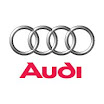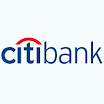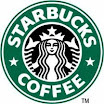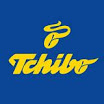Coca-Cola. Nike. McDonald’s. There’s no denying the power of effective branding—these names have become synonymous with global profitability. Much of that strength is embodied in the companies’ visual identities: the brandmark. For Nike, it’s the “swoosh;” for McDonald’s, the ubiquitous yellow arch.But imagine what would happen if Nike had two visual manifestations of the familiar swoosh. Clearly, the brand identity would not be as strong.
 That’s exactly what happened at Johns Hopkins Medicine. For years, it had two brandmarks: a blue and white dome in a square, and a white dome in a triangle labeled “research, teaching and patient care.” Until, that is, JHM leaders asked graphic designer Max Boam, director of creative services in the Office of Corporate Communications, to heighten the institution’s identity by incorporating the existing brandmarks into one.
That’s exactly what happened at Johns Hopkins Medicine. For years, it had two brandmarks: a blue and white dome in a square, and a white dome in a triangle labeled “research, teaching and patient care.” Until, that is, JHM leaders asked graphic designer Max Boam, director of creative services in the Office of Corporate Communications, to heighten the institution’s identity by incorporating the existing brandmarks into one.Step 1: The triangle becomes the basis of the logo.
 Using the more recent version, which incorporates the tripartite mission triangle as the basis for the new logo, Boam changed the white dome to navy to create a bolder contrast. But the mark still had flaws. The spaces between the letters in Medicine were greater than the distance between them and Johns Hopkins. What’s more, the letters in Medicine were thinner than the letters in Research, Teaching and Patient Care. At smaller sizes, Medicine would always reproduce poorly.
Using the more recent version, which incorporates the tripartite mission triangle as the basis for the new logo, Boam changed the white dome to navy to create a bolder contrast. But the mark still had flaws. The spaces between the letters in Medicine were greater than the distance between them and Johns Hopkins. What’s more, the letters in Medicine were thinner than the letters in Research, Teaching and Patient Care. At smaller sizes, Medicine would always reproduce poorly.Step 2: Medicine becomes bolder.
 One solution was to use a thicker, bolder typeface for Medicine. The result was a more balanced whole that integrated with the triangle and reproduced well, even at small sizes. But the letters in Medicine were still too far apart.
One solution was to use a thicker, bolder typeface for Medicine. The result was a more balanced whole that integrated with the triangle and reproduced well, even at small sizes. But the letters in Medicine were still too far apart.Step 3: A more balanced whole is created.
 Boam tackled the problems by tightening the spacing. “We read word shapes, not individual letters. Too much space between letters makes comprehension slow,” he says. Now, the three elements were balanced, the words readable, and the J was no longer hanging. Still, the brandmark needed a more modern look. So Boam removed the words from the triangle, closed the small gaps to form a solid whole, and created a three-dimensional feel through shading.
Boam tackled the problems by tightening the spacing. “We read word shapes, not individual letters. Too much space between letters makes comprehension slow,” he says. Now, the three elements were balanced, the words readable, and the J was no longer hanging. Still, the brandmark needed a more modern look. So Boam removed the words from the triangle, closed the small gaps to form a solid whole, and created a three-dimensional feel through shading.The official brandmark.
 The new brandmark has a much cleaner appearance with a dimensional element that adds form to the triangle graphic. The hanging J was restored to be more in concert with the University’s logo. Departments and divisions are urged to embrace the new brandmark.
The new brandmark has a much cleaner appearance with a dimensional element that adds form to the triangle graphic. The hanging J was restored to be more in concert with the University’s logo. Departments and divisions are urged to embrace the new brandmark. Reference:http://www.hopkinsmedicine.org/dome/0412/newsreport2.cfm













0 yorum:
Post a Comment